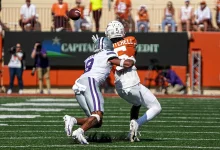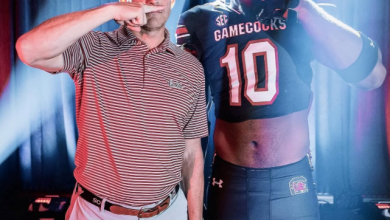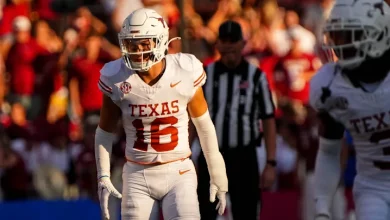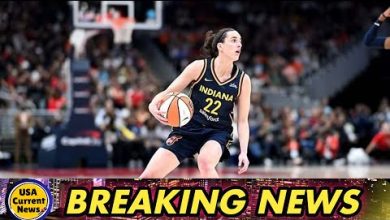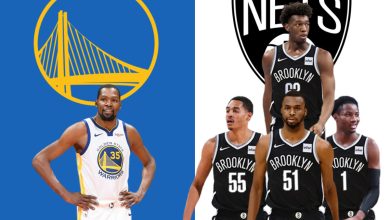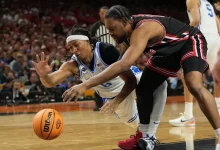Jayson Tatum’s Injury in Game 4 Against the New York Knicks: A Devastating Blow to the Boston Celtics’ Playoff Hopes.
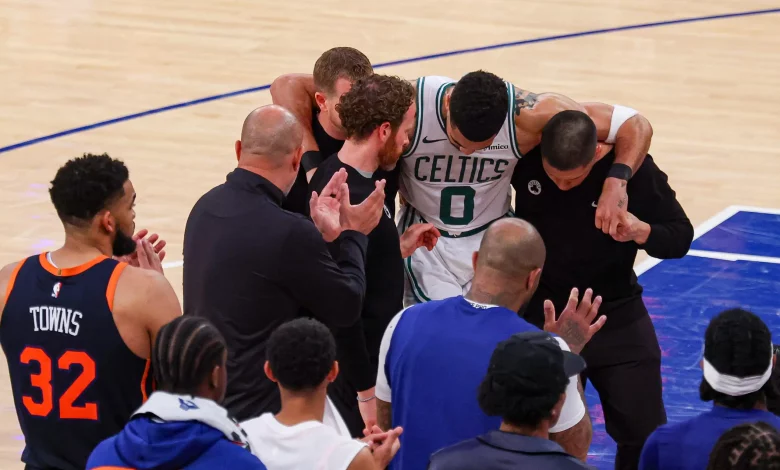
The Boston Celtics’ dreams of another NBA championship took a serious hit when star forward Jayson Tatum suffered a significant injury during Game 4 of the Eastern Conference Semifinals against the New York Knicks. Tatum, widely regarded as the franchise cornerstone and one of the NBA’s premier two-way players, went down with what team officials later confirmed to be a ruptured Achilles tendon. The injury, sustained late in the game as he attempted to make a hustle play on a loose ball, has now cast a long shadow over both the Celtics’ current playoff run and their future outlook.
This article breaks down the impact of Tatum’s injury, what it means for the Celtics’ title hopes this season, and the broader implications for their roster and strategy moving forward.
The Moment Everything Changed
With less than three minutes left in Game 4 and the Celtics trailing the Knicks by eight points at Madison Square Garden, Tatum lunged to intercept a pass. As he pushed off his right foot, he immediately collapsed to the floor, grimacing in pain. There was no contact from any Knicks player — a worrying sign, as non-contact injuries often indicate serious damage.
Medical staff rushed to the court, and after a few tense minutes, Tatum was helped to the locker room, putting no weight on his right leg. The Celtics would go on to lose the game, but the true loss came with the MRI the next morning: Tatum had torn his Achilles tendon and would be out for the remainder of the playoffs — and potentially part of next season.
Tatum’s Role in the Celtics’ Championship Hopes
Before his injury, Tatum had been nothing short of phenomenal throughout the playoffs. Averaging nearly 30 points, 9 rebounds, and 5 assists per game, he was the engine behind Boston’s offensive and defensive schemes. His ability to stretch the floor, create his own shot, and guard multiple positions made him indispensable to Coach Joe Mazzulla’s system.
In Game 4 alone, Tatum had dropped 42 points on the Knicks, tying Larry Bird for the most 40-point playoff games in Celtics history. His leadership on the floor, calm in clutch moments, and all-around production had Boston poised for another deep playoff run — perhaps even a return to the NBA Finals.
Without him, the Celtics are forced to reorganize around Jaylen Brown, Derrick White, and the rest of the supporting cast. While these players are talented, Tatum’s absence fundamentally changes the ceiling of this team.
Immediate Fallout: Game 5 and Beyond
To their credit, the Celtics rallied in Game 5 at TD Garden, blowing out the Knicks 127–102. Derrick White scored a playoff career-high 34 points, and Jaylen Brown added 26 points with 12 assists. The bench contributed significantly, and Boston’s defense suffocated the Knicks’ offense from start to finish.
Still, one game doesn’t erase the long-term challenge. Over a best-of-seven series — and especially against an Eastern Conference that still includes title threats like the Indiana Pacers and potentially the reigning champion Denver Nuggets in the Finals — the margin for error becomes razor-thin without a superstar like Tatum.
The Celtics may be able to survive this round, but sustaining success without their best player is a mountain few teams manage to climb.
Historical Parallels: Achilles Injuries and Recovery
Achilles injuries have long been among the most dreaded in professional sports. The tendon, which connects the calf muscles to the heel bone, plays a critical role in explosive movement — jumping, sprinting, and sudden changes of direction. Recovery typically takes 9 to 12 months, and while recent advances in sports medicine have improved outcomes, not all players return the same.
Kevin Durant, who suffered a similar injury in 2019 during the NBA Finals, returned to All-NBA form after a full year of recovery. On the other hand, players like DeMarcus Cousins and Wesley Matthews were never quite the same. Tatum’s youth (still only 27) and access to elite medical care give him a strong chance at full recovery, but it’s a long and uncertain road.
Strategic Impact: Roster Repercussions and Cap Ramifications
The Celtics now face a crossroads. With Tatum likely sidelined for much of next season, team President Brad Stevens and the front office have to consider how to retool the roster in his absence.
Do they stay the course, hoping that Brown, White, and Kristaps Porziņģis can carry the load? Or do they explore bold moves — perhaps even trading a star like Brown to add depth and flexibility?
There’s also the financial picture. Tatum is on a max contract extension, and Brown just signed a supermax deal last offseason. With the new CBA’s harsher penalties for luxury tax overages, Boston will find it increasingly difficult to add or retain talent without significant cap gymnastics.
This summer becomes pivotal not just for the short term, but for how the franchise is built over the next five years.
Locker Room Response: Leadership and Morale
In the days following Tatum’s injury, Celtics players and staff have made a point to rally around their fallen leader. Jaylen Brown, speaking after Game 5, said, “We’re doing this for JT now. He gave us everything, and it’s our turn to carry that forward.”
Coach Mazzulla has emphasized a “next-man-up” philosophy, though he acknowledges the emotional toll the injury has taken. “It’s devastating. You never want to see that happen to anyone, especially someone who works as hard and leads as quietly and effectively as Jayson.”
In Tatum’s absence, players like Al Horford — the elder statesman — and newcomer Jrue Holiday will be expected to take on more vocal roles. Maintaining morale and focus will be essential if the Celtics are to stay competitive through the postseason.
Fans and the Franchise: The Emotional Hit
For Celtics fans, this injury felt like a punch to the gut. Boston had already endured playoff heartbreak in recent years, including a Finals loss to the Warriors and last year’s Eastern Conference Finals defeat. This season had felt like redemption in the making — with a deep, balanced roster and a healthy Tatum leading the charge.
Now, there’s an unmistakable cloud of uncertainty. Can the Celtics still compete? Will Tatum ever be the same? Is their title window closing faster than expected?
Franchise legends like Paul Pierce and Kevin Garnett have voiced support for Tatum and confidence in the team’s resilience, but even they admit: this changes everything.
The Bigger Picture: What This Means for the NBA
Beyond Boston, Tatum’s injury reverberates across the league. The Eastern Conference landscape shifts dramatically, opening the door wider for teams like the Knicks, Pacers, and even the upstart Magic. In the West, contenders like Denver, Minnesota, and Oklahoma City suddenly face a much-altered Finals opponent if Boston were to survive their conference.
Tatum was also considered a leading face of the league’s next generation, alongside stars like Luka Dončić, Shai Gilgeous-Alexander, and Ja Morant. His absence from the playoffs diminishes the overall spectacle and serves as a reminder of how fragile championship pursuits can be.
A Timeline to Watch
Reports indicate that Tatum underwent surgery within 48 hours of the injury using the SpeedBridge technique — the same used in Durant’s rehab — which could shorten recovery time. Still, most estimates place his return between February and April of 2026.
That means the Celtics may not see a fully recovered Tatum until the 2026 playoffs — at best. It also puts pressure on the franchise to manage his minutes and ensure that long-term health is prioritized over short-term results.
Jayson Tatum’s injury is not just a setback for the Celtics — it’s a gutting moment for a franchise that had all the pieces in place. It forces difficult questions about their identity, strategy, and future. But within that hardship lies the resilience that has long defined Boston basketball.
Tatum’s story is far from over. If his previous performances and character are any indication, he will approach this rehab with the same dedication that made him a superstar. The Celtics, meanwhile, must regroup, respond, and find a way to honor the effort he gave them this season — by continuing to fight.
As the playoffs unfold, all eyes will remain on Boston — not just to see if they can survive, but to see how they rebuild their path forward in the wake of a franchise-altering injury.


